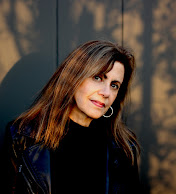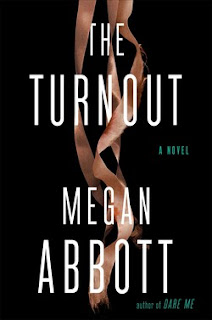By Viola Shipman/Wade Rouse
Graydon House 2021
400 pages Fiction
I am going to begin this review with the summary that came
from the Book Reporter website.
“When Sonny Dunes, a SoCal meteorologist whose
job is all sunshine and 72-degree days, is replaced by a
virtual meteorologist that will never age, gain weight or renegotiate
its contract, the only station willing to give the 50-year-old another
shot is the very place she has been avoiding since the day she left for college
--- her northern Michigan hometown.
Sonny grudgingly returns to the long, cold, snowy winters of her
childhood…with the added humiliation of moving back in with her mother. Not
quite an outsider but no longer a local, Sonny finds her past blindsiding her
everywhere: from the high school friends she ghosted, to the former journalism
classmate and mortal frenemy who’s now her boss, to, most keenly, the
death years ago of her younger sister, who loved the snow.
To distract herself from the memories she's spent her life
trying to outrun, Sonny throws herself headfirst into covering every small-town
winter event to woo a new audience, made more bearable by a handsome widower
with optimism to spare. But with someone trying to undermine her efforts to
rebuild her career, Sonny must make peace with who she used to be and allow her
heart to thaw if she’s ever going to find a place she can truly call home.”
The setting for The Secret of Snow is the marvelous
city of Traverse City, Michigan in winter, and Rouse completely captures the unique
nature of a snowy Michigan winter. The narrative describes snowstorms and
slippery roads, but it also helps us tune in to snow angels, snowmen, and a
variety of snow festivals and ice fishing that make for a fabulous Michigan
winter. I say “fabulous” rather tongue-in-cheek because it is snowing tonight
as I write this review, and I am frankly not feeling too “fabulous” about it.
Like Rouse’s other works, he speaks very effectively through
the voice of a woman, touching the heart as well as the sensibilities of a
woman. He uses the pen name of his grandmother, Viola Shipman, for a reason. He
knows his audience well. One of Rouse’s great gifts is to weave a great story filled
with introspection. One of the reasons his novels relate to women of a certain
age is that very few of us have lived lives without tragedy or complications.
This, most definitely, is a story about second chances in both life and love.
Sometimes I felt
Sonny’s story was a bit overwrought, although her emotions seemed authentic. I
have been thinking a great deal about mid-life crises as I have watched my
children and step-children reach middle age and experience their own individual
mid-life crises. Sonny, most definitely, is rethinking her life, and
particularly the loss of her sister all those many years ago. And she rather
begrudgingly has to begin anew, something many of us have had to do.
My favorite parts about reading a Viola Shipman novel are all
the references to the coastal towns of Michigan. I had to chuckle while reading
The Secret of Snow, because I know that Wade and his husband Gary
spend their winters in Palm Springs and out of the cold and snow that he so
eloquently describes in this cold, snowy novel.
This is the third Viola Shipman novel I have read. The
others are The
Summer Cottage, which takes place in Saugatuck, Michigan, and The
Clover Girls, which takes place in Glen Arbor, Michigan. When I heard
him speak last spring, I asked him when he was going to write a novel about
Pentwater, Michigan, my favorite summer place. He said, “Soon.” Holding you to
that promise, Wade! (By the way, the author picture includes some of my book
friends when we went to his book reading at Cranes Pie Pantry in Fennville,
Michigan.)
Wade Rouse’s website.







































